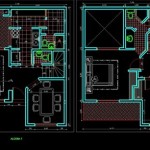Essential Aspects of House Elevation Plans
House elevation plans are essential documents for homeowners and builders alike. They provide a detailed overview of the exterior of a home, including the height, width, and depth of the structure, as well as the placement of windows, doors, and other features. Elevation plans are used for a variety of purposes, including:
- Planning the layout of a new home
- Making changes to an existing home
- Determining the cost of construction
- Applying for building permits
There are a few key elements that all house elevation plans should include:
- The overall height of the home: This is measured from the ground to the top of the roof.
- The width and depth of the home: These measurements are taken at the widest and deepest points of the structure.
- The placement of windows and doors: The elevation plan should show the location and size of all windows and doors.
- The location of other features: This could include things like porches, patios, decks, and chimneys.
- The roofline: The elevation plan should show the shape and pitch of the roof.
In addition to these basic elements, elevation plans may also include other information, such as:
- The materials to be used in the construction of the home
- The colors of the exterior finishes
- The landscaping around the home
- The topography of the lot
House elevation plans are an important part of the home building process. They provide a detailed overview of the exterior of the home, which can help homeowners and builders make informed decisions about the design and construction of the structure.
Tips for Creating a House Elevation Plan
If you are planning to build a new home or make changes to an existing home, it is important to create a house elevation plan. Here are a few tips for creating a plan that will meet your needs:
- Start with a sketch: Before you start drawing your plan, it is helpful to sketch out your ideas on paper. This will give you a general idea of the layout and dimensions of your home.
- Use a ruler and compass: When you are drawing your plan, it is important to use a ruler and compass to ensure that your measurements are accurate.
- Include all of the necessary details: Make sure your plan includes all of the information listed above, such as the overall height, width, and depth of the home, as well as the placement of windows, doors, and other features.
- Get feedback from others: Once you have finished your plan, it is a good idea to get feedback from others, such as a friend, family member, or architect. This can help you identify any errors or areas that could be improved.
Creating a house elevation plan can be a challenging task, but it is an important step in the home building process. By following these tips, you can create a plan that will help you build the home of your dreams.

Floor Plan Elevation Sample House Plans Building

Scheme Of The Tested Single Family House A Front Elevation B Scientific Diagram

How To Read House Plans Elevations

Elevations Designing Buildings

Architecture House Plan And Elevation Complete Drawing Cadbullb Bungalow Floor Plans Building Designs

Elevations Styles Home Elevation Design House

What Are Elevations Building Design House

Elevation Design Drawing Of House Building Plan
Duplex House Elevation Design In Pan

12 Normal House Front Elevation Designs With Renderings Brick Batten








